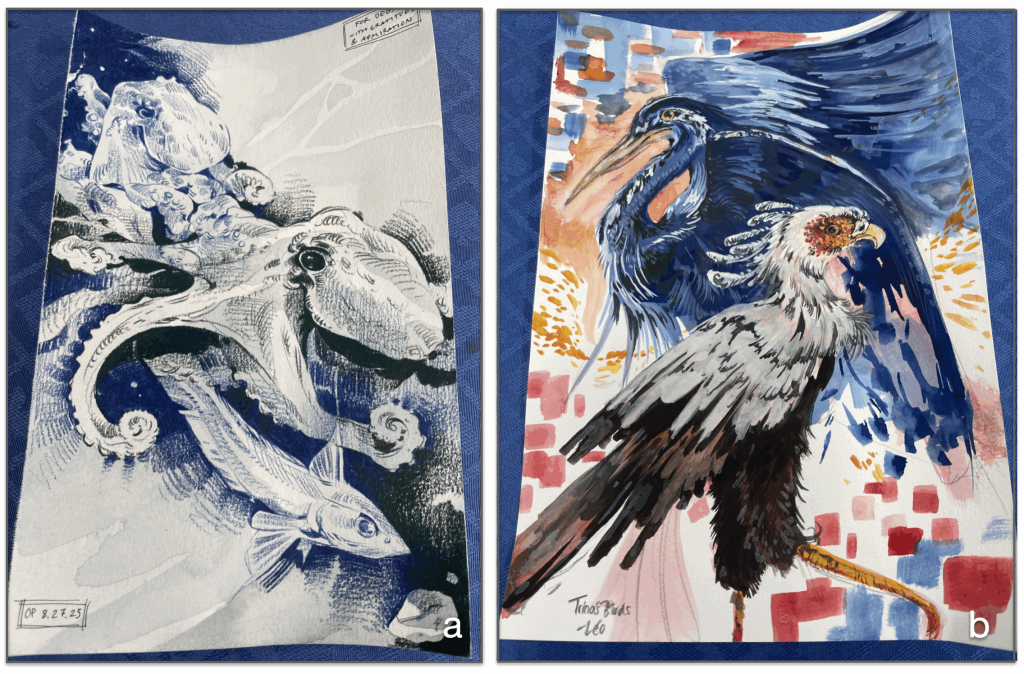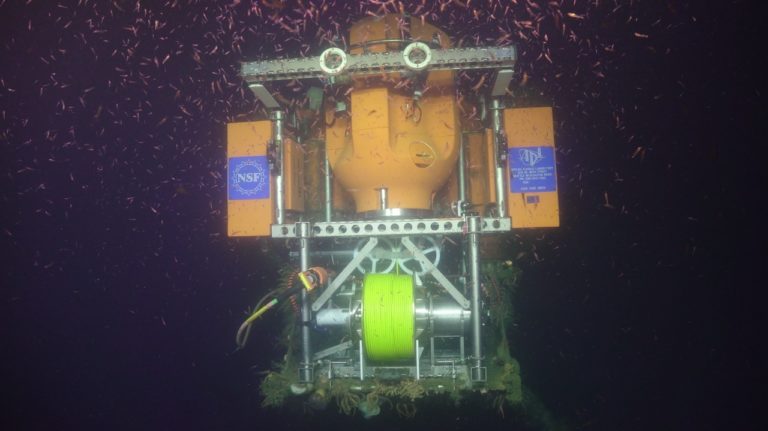Tomorrow, we say farewell to our incredible friends aboard the R/V Atlantis and the amazing ROV Jason team. They have welcomed us with open arms and treated us spectacularly well throughout our time together. We are deeply grateful for their hard work, generosity, kindness, and outstanding professionalism—not to mention the delicious meals that kept us going! Thank you all for making this such an unforgettable experience.
During our 27 days at sea, we visited all Regional Cabled Array sites resulting in some impressive cruise statistics:
- All scheduled Regional Cabled Array work was completed and more
- The Atlantis transited over 2600 kilometers
- Jason completed 48 dives (J2-1696 – J2-1744) spanning 2900 m to 80 m water depth
- 9 CTD’s were conducted reaching depths of 2900 m
- 348 CTD and 172 Niskin verification samples were processed for the water column sensors
- 6 Instrumented Shallow Profiler Platforms
- 4 junction boxes and 2 Benthic Experiment Packages were turned
- 82 Instruments were turned, 4 instruments were recovered
- Thousands of overlapping seafloor images to produce a time-series photomosaic of Southern Hydrate Ridge that has change dramatically over this past year
- 3 PI days (G. Xu and D. Soule) achieved all primary goals
- All vent fields were visited over 6 Jason dives
- Eight MISO temperature loggers were deployed and 7 recovered
- Multibeam surveys – 3D acoustic images of hydrothermal plumes were completed at ASHES
- Photomosaics were completed at the ASHES and Coquille fields
Thirteen undergraduates from the University of Washington, Queens College, and Western Washington University participated in the at-sea experiential learning program VISIONS. They were outstanding contributors throughout the cruise, standing 4-hour-on/8-hour-off watches in the ROV control van, assisting with CTD launches, and supporting fluid sampling efforts. Their spirit and joy were evident every step of the way.
As a special gift, we had the rare opportunity to directly witness the breathtaking seascapes and remarkable biological communities flourishing at Axial Seamount and Southern Hydrate Ridge—where life thrives not on sunlight, but on gas-rich fluids rising from the subsurface. Equally awe-inspiring was the abundance and diversity of organisms, of every shape and size, drifting past Jason in the twilight zone and in complete darkness, enduring pressures nearly 300 times greater than those at the surface.
Through their Daily Blogs and astounding artistry, we gained meaningful insights into their experiences and perspectives. The Jason pilots served as incredible mentors to the students and early-career RCA team members, even allowing them to sit in the “hot seat” in the Jason control van and—under close supervision—fly the vehicle themselves. It was truly a once-in-a-lifetime opportunity, and the students’ excitement was unmistakable, marked by ear-to-ear grins.
We all say a heartfelt thank you – we do not know when we will sail with you again, but look forward to it and wish you fair seas along the way.

Illustrations by UW Oceanography VISIONS students a) two octopus and a rattail by Ada Carter. b) a blue heron and secretary bird by Leo Couchon. Credit: Ada Carter and Leo Couchon, University of Washington, V25.

A swarm of krill engulfs the Oregon Offshore Shallow Profiler mooring as the ROV Jason conducts a survey after replacing the profiler pod. Credit: NSF-OOI/UW/WHOI; Dive J2-1698; V25

Nate and Oliver, VISIONS’25 students, help RCA staff member Andrew Paley. sample CTD waters. Credit: M. Elend, University of Washington, V25.

Blue ciliates intermingle with tubeworms, palm and scale worms and limpets at the 9 meter chimney in the International District Hydrothermal Field. Credit: UW/NSF-OOI/WHOI; V25.
Recent Updates